Data teams are drowning in alerts.
The average enterprise data stack generates thousands of data quality warnings daily, but the vast majority turn out to be false positives, eroding trust and wasting engineering cycles.
This alert fatigue has created a paradox: the more we monitor data, the less teams trust their monitoring systems.
Sifflet takes a fundamentally different approach to this challenge.
Instead of simply detecting anomalies, this AI-native data observability platform focuses on business-context-aware observability by connecting technical data health metrics with downstream business impact to help modern data teams scale trust, not just fire drills.
What Is Sifflet?
Sifflet is an AI-native data observability platform built to bring order, visibility, and reliability to your data stack.
It unifies data discovery, monitoring, and troubleshooting to boost trust and team productivity.
Unlike traditional tools that focus solely on technical metrics, Sifflet connects data engineering and business teams with context-rich insights that spotlight what matters most.
What sets Sifflet apart is its system of AI agents, Sentinel, Sage, and Forge, designed to help lean data teams manage fast-growing ecosystems. These agents go beyond anomaly detection, analyzing metadata, recalling past incidents, and suggesting context-aware fixes grounded in historical patterns.
Sifflet’s philosophy is that observability should be a shared responsibility.
With business context, no-code workflows, and accessible interfaces, it empowers organizations to treat data quality as a driver of business value above and beyond a technical task.
Who Is Sifflet For?
Sifflet targets three primary personas within data-driven organizations, each with distinct needs and use cases:
Chief Data Officers and Data Platform Leads
Sifflet serves data leaders who need to ensure high-quality data across multiple countries and complex data ecosystems, as demonstrated by customers like Carrefour Links, which manages data from over 40 countries.
CDOs benefit from Sifflet's executive-level dashboards that provide visibility into data reliability across the entire organization, allowing them to make informed decisions about data infrastructure investments and governance policies.
Platform leads appreciate Sifflet's ability to scale observability without proportional increases in engineering overhead.
The platform's automated quality tests deliver up to 80% time savings in setup and maintenance, allowing teams to focus on strategic initiatives rather than manual monitoring configuration.
Data Engineers
For data engineers, Sifflet provides the technical depth needed to diagnose and resolve complex data issues quickly.
Users report being able to spot data problems like high numbers of null values and low volumes of processed data that were previously under the radar.
The platform's comprehensive data lineage capabilities enable engineers to perform root cause analysis efficiently, tracing issues from source systems through transformations to downstream consumption.
The platform's field-level lineage across the entire data pipeline, from ingestion to BI, allows engineers to understand exactly where problems originate and what downstream systems will be affected.
This visibility is particularly valuable when making schema changes or debugging production incidents.
Data Scientists and Analysts
Sifflet proactively alerts data scientists about data quality issues, schema changes, and other problems without requiring them to manage the underlying data platform.
The platform's no-code interface allows less technical users to understand data flow through the entire pipeline and detect issues that could impact their analyses or dashboards.
Business analysts benefit from the platform's ability to make the data pipeline understandable to non-technical stakeholders, helping data teams communicate issues and projects more effectively.
Sifflet's 3 Main Technologies
Sifflet is designed with 3 core technologies to guarantee end-to-end observability.
Data Catalog
Sifflet's data catalog goes beyond simple metadata management by incorporating business context directly into technical documentation.
The catalog automatically discovers and profiles data assets, then enriches them with business tags, ownership information, and usage patterns.
This approach ensures that both technical and business users can find, understand, and trust the data they need.
The catalog integrates seamlessly with existing data governance workflows, allowing teams to maintain centralized documentation while supporting self-service data discovery. Users can search across technical schemas and business glossaries simultaneously, bridging the gap between how data is stored and how it's actually used.
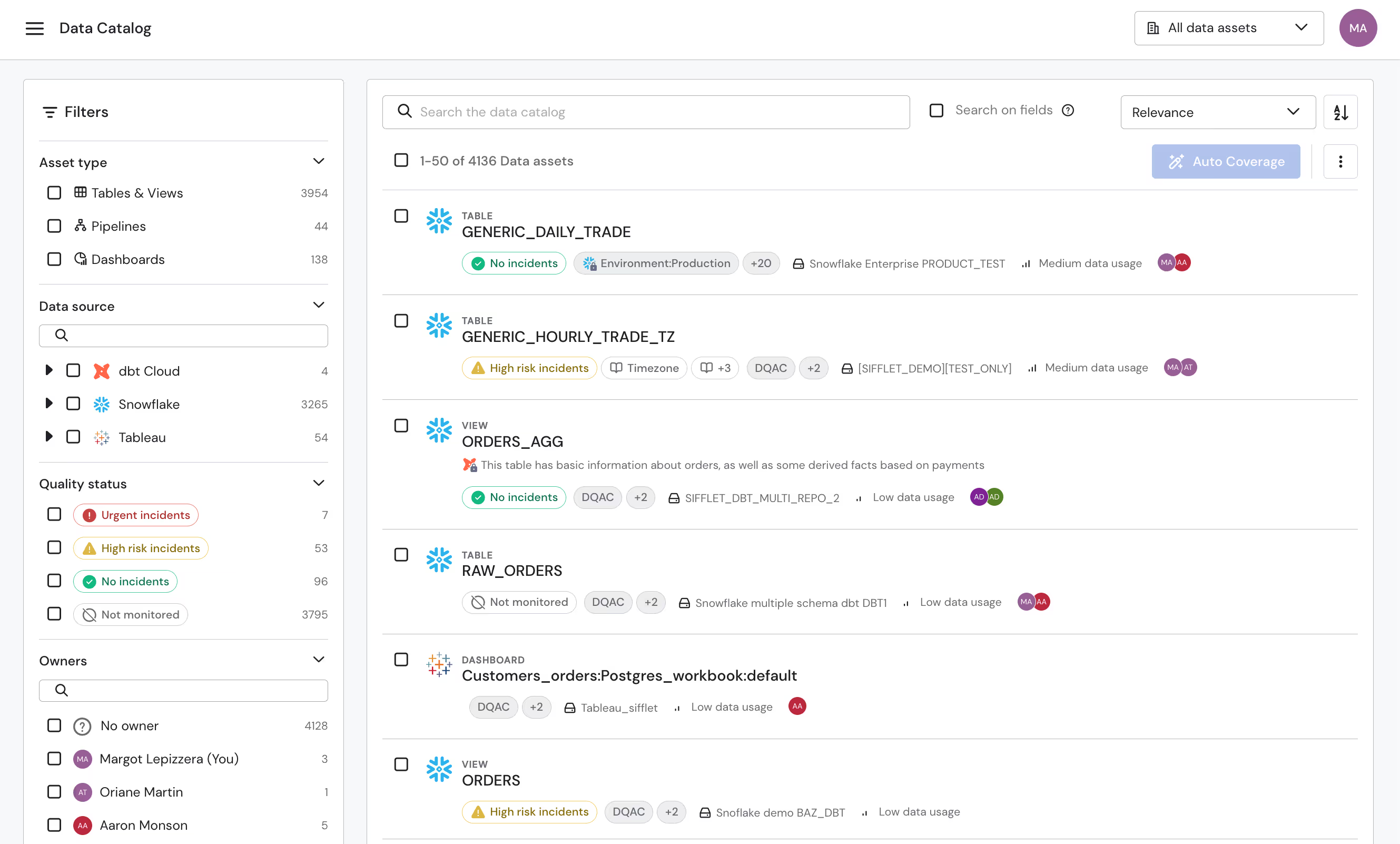
Data Monitoring
Sifflet offers both out-of-the-box and custom monitoring capabilities, with AI that optimizes coverage and minimizes noise while getting smarter over time.
The platform's monitoring engine automatically adapts to changing data patterns, reducing the manual threshold tuning that plagues traditional observability tools.
The monitoring system covers multiple data quality dimensions including nulls, seasonality patterns, invalid values, and data conformity checks that ensure compliance with business rules.
Unlike generic anomaly detection systems, Sifflet's monitors understand business context, distinguishing between technical anomalies that require immediate attention and expected business variations like seasonal spikes.

Data Lineage
Sifflet provides extensive field-level lineage across the entire data pipeline, from ingestion to BI tools, with clear visual representations that make it easy to understand data flow.
The lineage graph automatically updates as data transformations change, ensuring that impact analysis remains accurate even in rapidly evolving environments.
When data issues occur, teams can use Sifflet's built-in lineage tracking to trace problems upstream through the lineage graph, identify where issues started, and resolve them faster.
This capability is particularly valuable for complex data environments where a single upstream change can cascade through dozens of downstream systems.
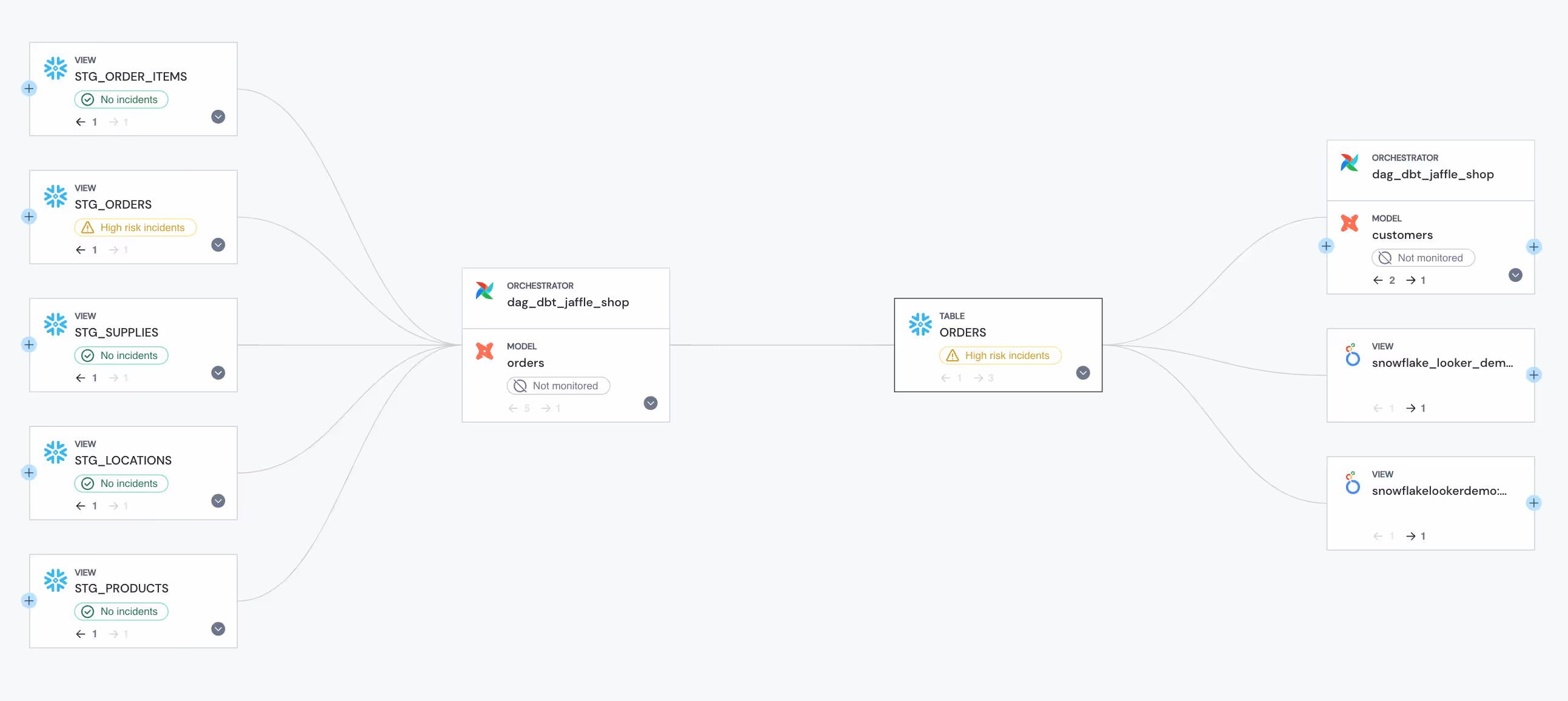
Key Sifflet Features (What Makes Sifflet Different)
Aside from the 3 main technologies, Sifflet offers a comprehensive set of features that will ensure obseravilibty and alerting are efficient and context-aware.
AI Agents for Observability
Sifflet's most distinctive feature is its system of AI agents.
Sentinel analyzes system metadata to recommend precise monitoring strategies, while Sage recalls past incidents and identifies root causes in seconds and Forge suggests contextual fixes grounded in historical patterns.

These agents represent a significant evolution from traditional rule-based monitoring systems.
As noted by Sanjeev Mohan, founder of SanjMo and former VP Analyst at Gartner:
"Rather than relying on static monitoring, these agents bring memory, reasoning, and automation into the fold, helping teams move from alert fatigue to intelligent, context-aware resolution".
Dynamic Monitors
Unlike static threshold-based systems, Sifflet's dynamic monitors automatically adapt to changing data volumes, schemas, and business patterns.
This adaptability enables organizations to maintain quality as they scale, as demonstrated by Carrefour Links' ability to monitor over 800 data assets across 8+ countries with automated quality checks.
The platform's machine learning algorithms continuously learn from data patterns and user feedback, reducing false positives over time while maintaining sensitivity to genuine anomalies.
This approach addresses one of the biggest pain points in traditional observability: the constant need to retune monitoring rules as data evolves.
Smart Alerts
Sifflet uses metadata and machine learning to prioritize anomalies and reduce noise, providing context-rich alerting that helps teams focus on what matters most.
Rather than generating generic "table row count changed" alerts, the platform provides business context about which downstream reports, dashboards, or processes might be affected.
The system pulls in documentation and business context with input from downstream users to understand business-critical data products and processes, ensuring technical teams know exactly what to prioritize when monitoring and triaging.
Metadata Management
Sifflet's approach to metadata management combines automated discovery with collaborative enrichment.
The platform automatically extracts technical metadata from connected systems, then provides interfaces for business users to add context, ownership information, and business rules.
This hybrid approach ensures that metadata remains both comprehensive and current.
The platform offers deep integration capabilities within the modern data stack, centralized documentation and lineage, and a powerful metadata search engine, making it easy for teams to find and understand data assets regardless of their technical background.

How to Use Sifflet
Sifflet can be set up quickly and easily.
To get started you simply have to follow these 3 steps.
Step 1: Plan a Strategic Implementation
Sifflet is designed as a 'plug and play' solution, with teams able to see improvements in a matter of days thanks to quick setup.
However, successful implementation requires strategic thinking about which data assets to monitor first and how to integrate observability into existing workflows.
The recommended approach starts with identifying business-critical data assets, such as tables, pipelines, and reports that directly impact revenue, compliance, or customer experience.
Organizations like Carrefour Links have successfully implemented Sifflet across 800+ data assets, but they began with their most critical commercial data products.
Step 2: Deploy and Set up
Sifflet supports cloud-native deployment with agent-based architecture that minimizes infrastructure overhead.
The platform connects to existing data infrastructure through standard APIs and connectors, avoiding the need for data replication or major architectural changes.
Implementation typically takes a few weeks for complex environments, with the fastest deployments showing results within days. The platform's auto-discovery capabilities automatically catalog data assets and suggest initial monitoring rules based on observed patterns, reducing the manual configuration burden.
Integration with Existing Workflows
Sifflet integrates with internal ticketing systems and collaboration tools, ensuring that data quality issues fit into existing incident management workflows. The platform supports popular tools like Slack, Microsoft Teams, and Jira, allowing teams to receive alerts and collaborate on resolutions within their preferred environments.
For teams using infrastructure-as-code approaches, Sifflet supports "Quality-as-Code" methodologies that allow monitoring rules to be version-controlled and deployed alongside data transformations.
What Users Say About Sifflet
The proof that Sifflet is a major asset in your data platform is not what we tell you, its what our users have to say.
G2 Reviews and User Feedback
Sifflet is ranked as having the "Best estimated ROI and Fastest implementation" by G2 users, reflecting the platform's focus on delivering value quickly rather than requiring extensive setup periods.
A data engineer reviewer noted:
"I am able to perform multiple quality checks (nulls, seasonality patterns, invalid values...) very easily and quickly. So far, after a few days of usage, I have spotted a few problems (for instance, invalid regex) that were under the radar".
Another user highlighted the platform's accessibility:
"I am the only analyst in my team, so being able to show the pipeline in a manner that is simple to understand really helps me communicate issues/projects more easily".
Customer Success Stories
Carrefour Links represents one of Sifflet's most comprehensive implementations.
The French retail giant's data division uses Sifflet to monitor over 800 data assets across 8+ countries, covering 7 PB of data with automated quality checks.
The implementation delivered 80% time savings in both test setup and maintenance while enabling over 100 collaborators to access data quality insights.
A customer testimonial highlighted the AI-native approach:
"What impressed us most about Sifflet's AI-native approach is how seamlessly it adapts to our data landscape, without needing constant tuning. The system learns patterns across our workflows and flags what matters, not just what's noisy".
Where Does Sifflet Stand?
Users consistently highlight Sifflet's differentiation from competitors like Monte Carlo, Anomalo, and Bigeye.
While Monte Carlo focuses primarily on technical data quality for engineering teams, Sifflet is designed for both technical and non-technical users, making data observability a shared responsibility across the organization.
Independent analysis positions Sifflet as "an end-to-end data observability platform that rivals Monte Carlo on price and has a powerful feature set," particularly noting its strength in ensuring data accuracy, timeliness, and completeness for businesses with fast-changing data distributions.
Compared to point solutions like Anomalo (focused primarily on anomaly detection) or Soda (centered on data quality testing), Sifflet provides a more comprehensive platform that combines catalog, monitoring, and lineage capabilities in a single interface.
This unified approach addresses the common problem of tool sprawl in data operations, where teams struggle to maintain consistency across multiple specialized platforms.
Ready to See Sifflet in Action?
As data volumes double year over year and AI workloads move into production, data reliability is no longer a technical luxury, it’s a business necessity.
Traditional methods like reactive testing, manual thresholds, and tool-specific monitoring can’t keep pace.
Sifflet meets this challenge with augmented data quality for analytics and AI, combining AI-native architecture, business context, and cross-functional accessibility. It evolves data observability from a monitoring function into a strategic capability that drives business value.
For teams evaluating observability solutions, Sifflet stands out with fast implementation, intelligent automation, and a unified experience for both technical and business users. Trusted by enterprise leaders like Carrefour Links and recognized as a G2 leader for ROI and speed to value, Sifflet delivers results at scale.
Whether you're a Chief Data Officer looking to scale trust, an engineer drowning in alerts, or a business user demanding reliable data for high-stakes decisions, Sifflet brings the context-aware observability that turns data quality into a competitive edge.
Because the future of data observability isn’t just detecting issues, it’s preventing them, understanding their impact, and resolving them together.



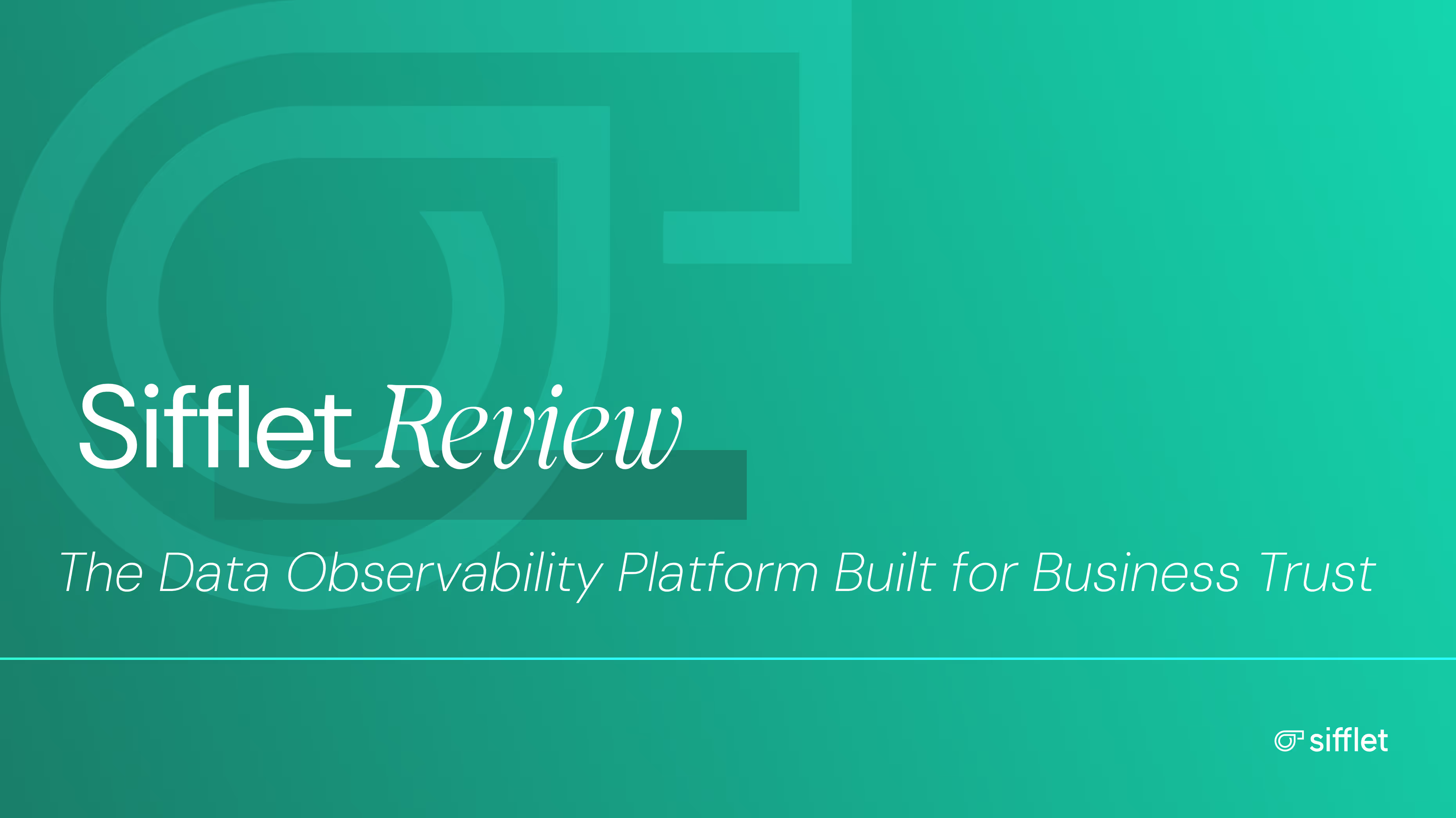
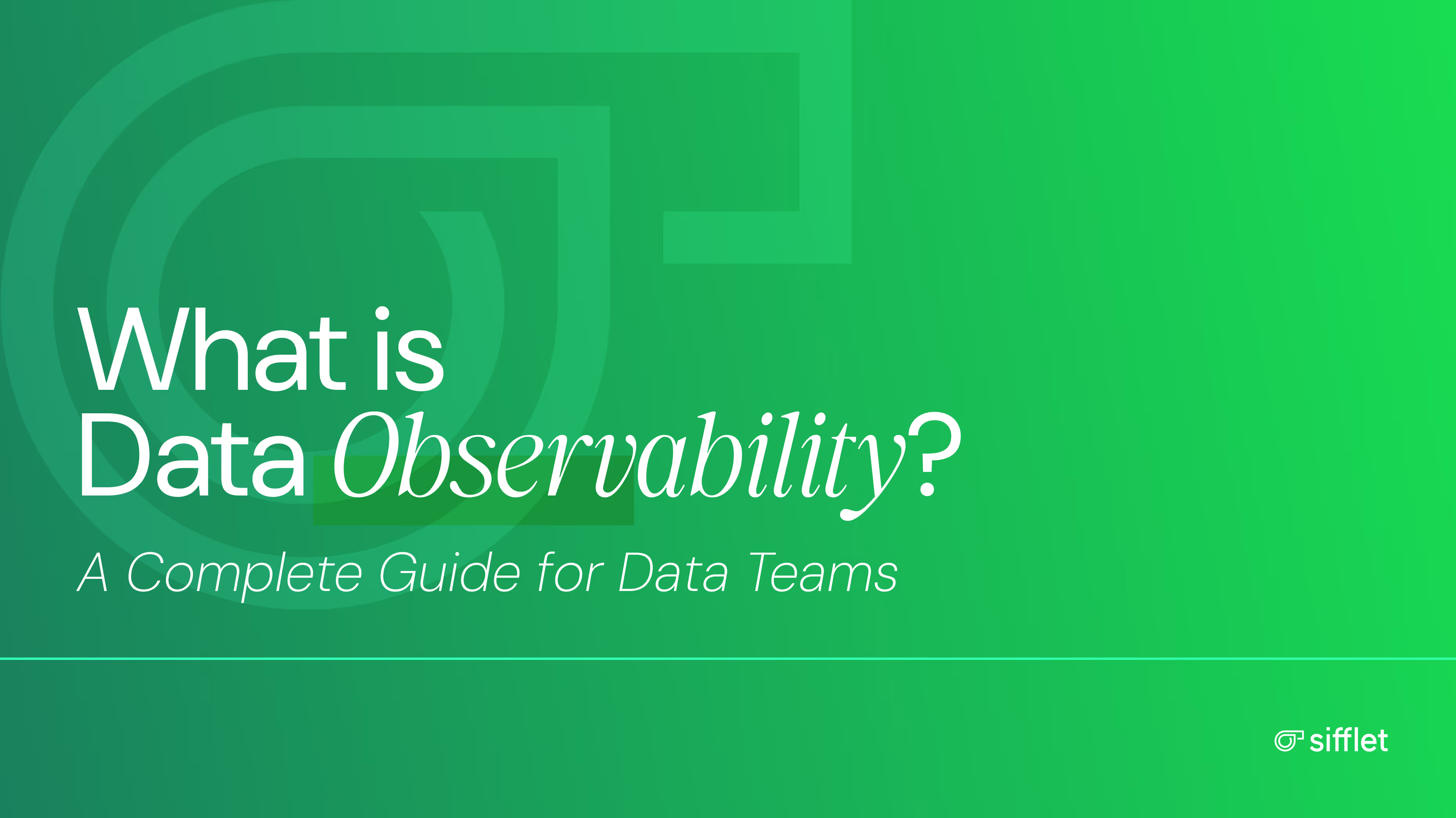
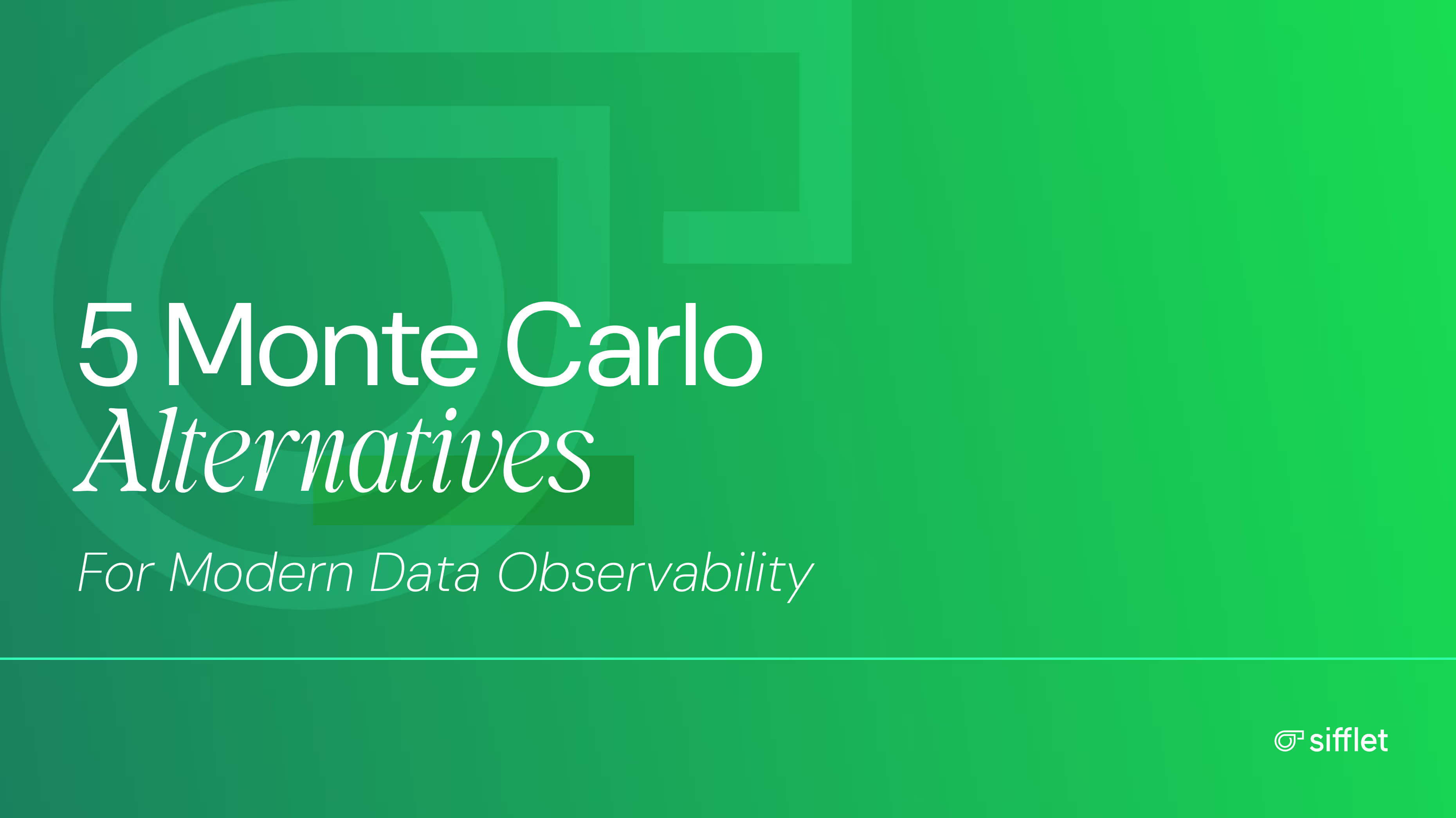
.avif)

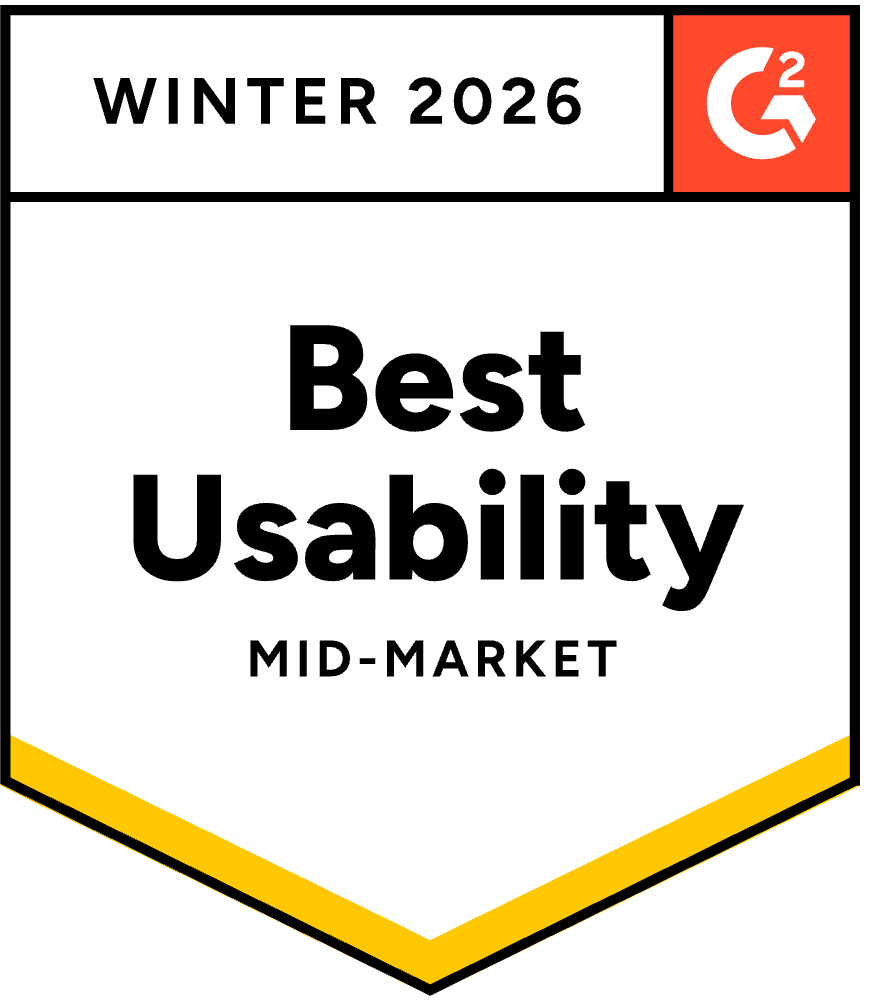


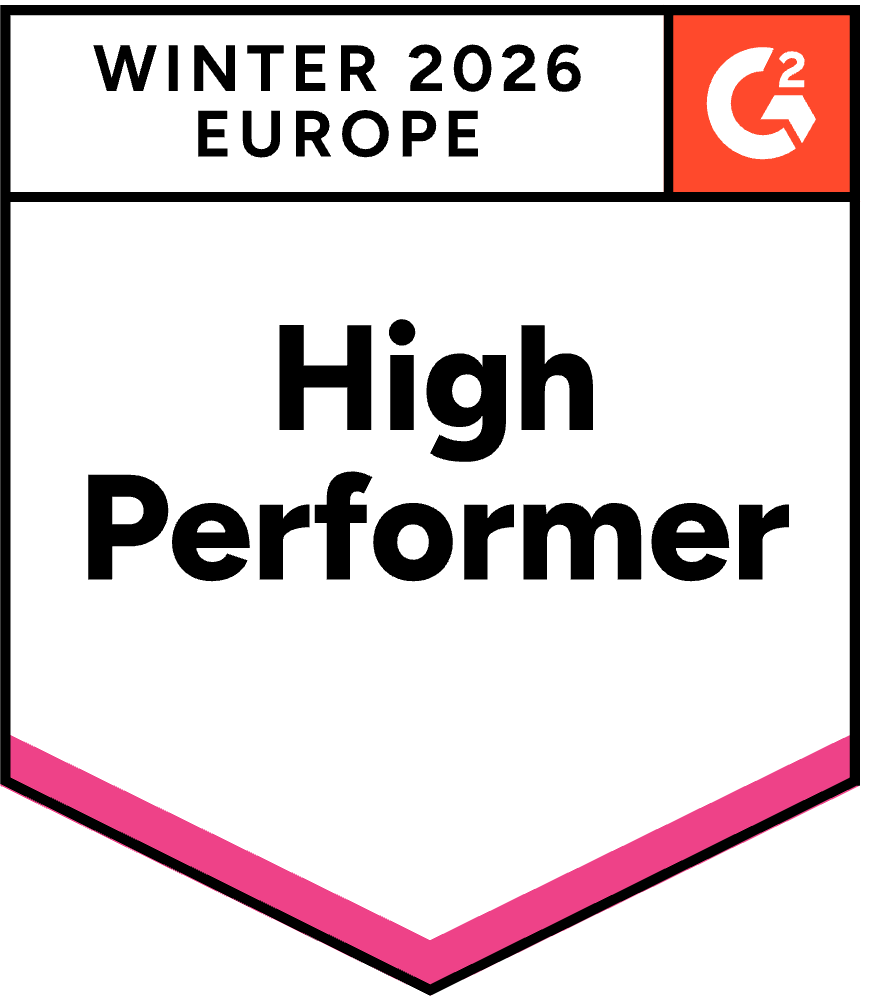

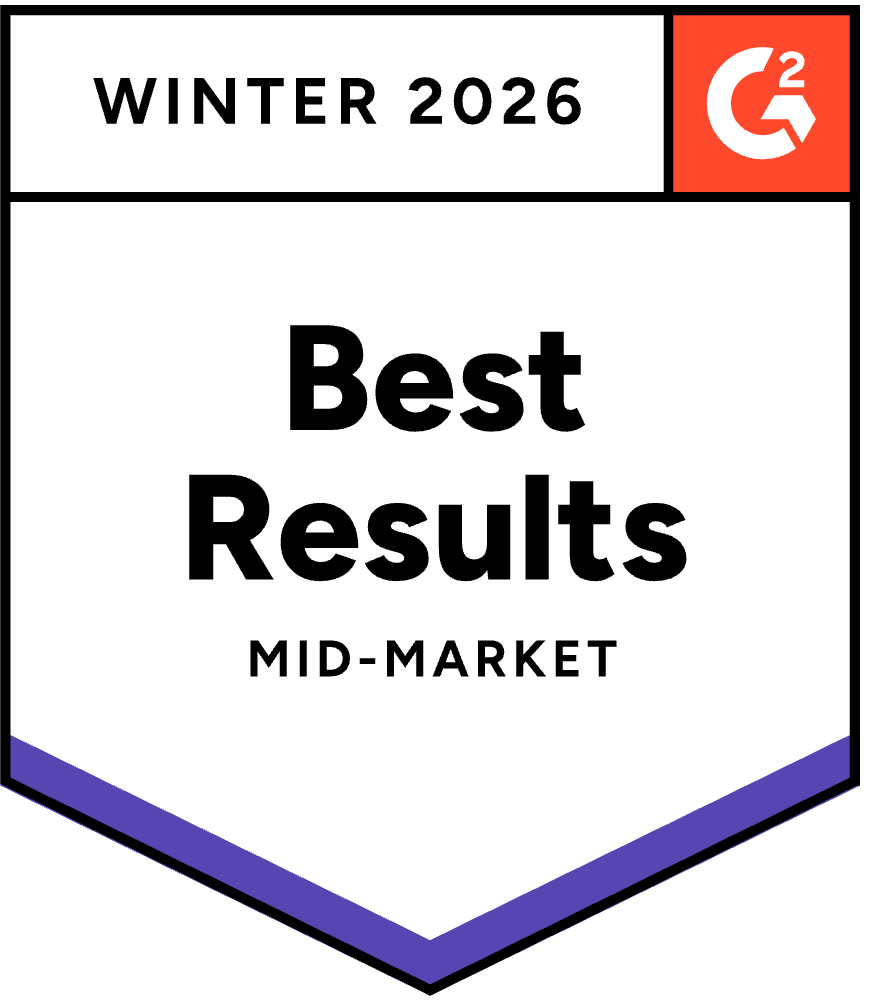





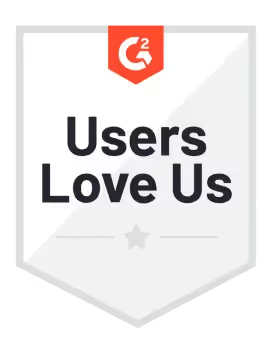
-p-500.png)
